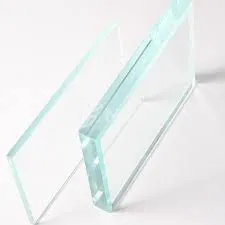Frosted float glass, a versatile and aesthetically pleasing material, has become a popular choice in various architectural and interior design projects. This type of glass is created through a process that involves the fusing of silica, soda ash, and other raw materials, which are then melted and formed into smooth sheets. The frosted effect is achieved by sandblasting or acid etching the surface, giving it a translucent quality that diffuses light while maintaining privacy.
One of the most appealing features of frosted float glass is its ability to blend functionality with elegance. It serves as a barrier without compromising the illumination of a space. In residential settings, frosted glass panels are often used in bathroom windows, shower enclosures, and room dividers. They allow natural light to filter through while safeguarding the occupants’ privacy, making them ideal for areas where transparency is not desired.
In commercial applications, frosted float glass is frequently utilized in office partitions, conference rooms, and storefronts
. By using this type of glass, businesses can create a modern, open atmosphere while still delineating spaces. The subtle etching or frosting can also be customized to include company logos or decorative patterns, enhancing the branding and aesthetic appeal of the workspace.
Moreover, frosted glass is an excellent choice for energy efficiency. While it allows light transmission, it also helps in reducing glare, creating a more comfortable environment. Additionally, frosted glass can contribute to better temperature regulation, as it can block harmful UV rays, protecting furnishings and flooring from fading. This dual functionality is a significant advantage for both residential and commercial property owners looking to maximize the efficiency of their spaces.
frosted float glass
Safety is another important aspect of frosted float glass. It can be produced using tempered glass, which is heated and then rapidly cooled to increase its strength. This makes it less likely to shatter upon impact, an essential feature for high-traffic areas or properties with children. Additionally, even if a tempered frosted glass piece does break, it shatters into small, blunt pieces rather than sharp shards, minimizing the risk of injury.
Aesthetically, frosted glass comes in various designs and finishes, allowing it to complement diverse interior styles. From sleek and minimalist to textured and ornate, the customization options are endless. This adaptability makes it a favorite among architects and designers looking to add a unique touch to their projects.
In conclusion, frosted float glass stands out as a fantastic material that marries style with practicality. Its ability to diffuse light while ensuring privacy, along with its safety features and aesthetic flexibility, makes it a valuable component in both residential and commercial design. As architectural trends continue to evolve, frosted glass is sure to remain a staple choice, providing beauty and functionality in equal measure. Whether used in homes, offices, or public spaces, frosted float glass enhances the quality of environments while catering to the needs of modern living.
 Afrikaans
Afrikaans  Albanian
Albanian  Amharic
Amharic  Arabic
Arabic  Armenian
Armenian  Azerbaijani
Azerbaijani  Basque
Basque  Belarusian
Belarusian  Bengali
Bengali  Bosnian
Bosnian  Bulgarian
Bulgarian  Catalan
Catalan  Cebuano
Cebuano  Corsican
Corsican  Croatian
Croatian  Czech
Czech  Danish
Danish  Dutch
Dutch  English
English  Esperanto
Esperanto  Estonian
Estonian  Finnish
Finnish  French
French  Frisian
Frisian  Galician
Galician  Georgian
Georgian  German
German  Greek
Greek  Gujarati
Gujarati  Haitian Creole
Haitian Creole  hausa
hausa  hawaiian
hawaiian  Hebrew
Hebrew  Hindi
Hindi  Miao
Miao  Hungarian
Hungarian  Icelandic
Icelandic  igbo
igbo  Indonesian
Indonesian  irish
irish  Italian
Italian  Japanese
Japanese  Javanese
Javanese  Kannada
Kannada  kazakh
kazakh  Khmer
Khmer  Rwandese
Rwandese  Korean
Korean  Kurdish
Kurdish  Kyrgyz
Kyrgyz  Lao
Lao  Latin
Latin  Latvian
Latvian  Lithuanian
Lithuanian  Luxembourgish
Luxembourgish  Macedonian
Macedonian  Malgashi
Malgashi  Malay
Malay  Malayalam
Malayalam  Maltese
Maltese  Maori
Maori  Marathi
Marathi  Mongolian
Mongolian  Myanmar
Myanmar  Nepali
Nepali  Norwegian
Norwegian  Norwegian
Norwegian  Occitan
Occitan  Pashto
Pashto  Persian
Persian  Polish
Polish  Portuguese
Portuguese  Punjabi
Punjabi  Romanian
Romanian  Russian
Russian  Samoan
Samoan  Scottish Gaelic
Scottish Gaelic  Serbian
Serbian  Sesotho
Sesotho  Shona
Shona  Sindhi
Sindhi  Sinhala
Sinhala  Slovak
Slovak  Slovenian
Slovenian  Somali
Somali  Spanish
Spanish  Sundanese
Sundanese  Swahili
Swahili  Swedish
Swedish  Tagalog
Tagalog  Tajik
Tajik  Tamil
Tamil  Tatar
Tatar  Telugu
Telugu  Thai
Thai  Turkish
Turkish  Turkmen
Turkmen  Ukrainian
Ukrainian  Urdu
Urdu  Uighur
Uighur  Uzbek
Uzbek  Vietnamese
Vietnamese  Welsh
Welsh  Bantu
Bantu  Yiddish
Yiddish  Yoruba
Yoruba  Zulu
Zulu 

